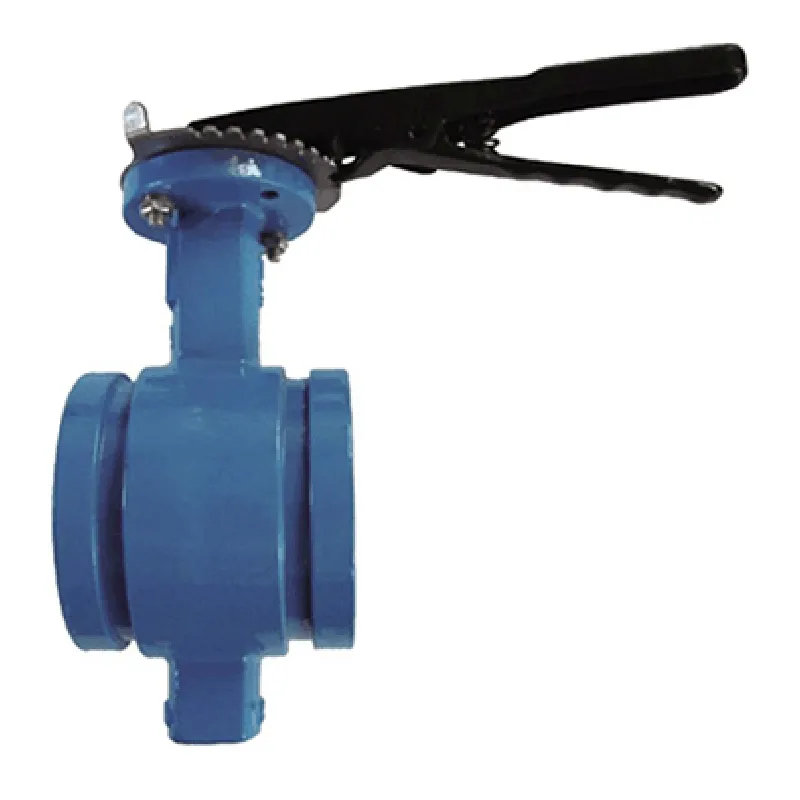1 月 . 06, 2025 19:43 Back to list
High-Performance Butterfly Valve Solutions
Butterfly valves are pivotal components in the vast world of fluid mechanics, celebrated for their versatility and efficiency. As an engineer specializing in fluid dynamics, I've garnered years of firsthand experience working with this ingenious device, discovering that its design not only optimizes flow control but also enhances system reliability.

The quintessential butterfly valve features a simplistic yet effective mechanism—a rotating disc positioned in the center of a pipe. When rotated, the disc aligns with the flow to permit passage or obstructs it to halt flow, providing an immediate and effective flow control solution. This compact design limits space occupation and reduces weight compared to alternative valves such as gate or ball valves, making installation and maintenance considerably more accessible, particularly in constrained environments.
My years in the field have taught me that the selection of the material for the disc and seal is paramount in determining a butterfly valve's performance. High-performance alloys and elastomers are frequently utilized to combat aggressive media and challenging environments, ensuring longevity and minimizing maintenance requirements. In petrochemical industries, for instance, where valves encounter hazardous and corrosive substances, superior material selection can preempt leakage and potential safety failures, illustrating the valve’s indispensability.

The adaptability of butterfly valves extends to their application in automated systems. With technological advancements, integrating actuators into butterfly valve systems has become commonplace, providing automated control and real-time operation feedback. My work with automated systems highlights the importance of reliable data transmission and response time, whereby the integration of smart valves offers unprecedented precision and efficiency in fluid regulation, essential in critical applications like pharmaceutical manufacturing or water treatment facilities.
butterfly valve
Understanding the dynamics of flow resistance, experts like myself can attest to the butterfly valve's low-pressure drop feature, pivotal in reducing energy consumption and operational costs. In large systems where energy efficiency is paramount, this characteristic is invaluable. Companies seeking sustainability can achieve noteworthy reductions in carbon footprints by incorporating butterfly valves, aligning operational strategies with environmentally conscious practices.
Through rigorous analysis and collaborative efforts with multidisciplinary teams, I've witnessed firsthand how butterfly valves play a leading role in plumbing setups, HVAC systems, and industrial fluid networks worldwide. Notably, their rapid operation is crucial during emergency shutoffs, where speed can significantly mitigate risks and potential damages.
In sum, the butterfly valve exemplifies engineering excellence, renowned for its robust versatility, cost-effectiveness, and energy efficiency. Its ability to adapt to various applications—ranging from industrial processes to residential plumbing—establishes it as a staple in flow control technology. By fostering a profound understanding of their operational dynamics and material composition, professionals can leverage butterfly valves to enhance system performance, secure economic benefits, and support environmental objectives.
In a field that demands precision, reliability, and innovation, the butterfly valve stands as a testament to the power of engineering, seamlessly blending expertise with practical application for superior fluid management solutions.
Share
-
Understanding the Differences Between Wafer Type Butterfly Valve and Lugged Butterfly ValveNewsOct.25,2024
-
The Efficiency of Wafer Type Butterfly Valve and Lugged Butterfly ValveNewsOct.25,2024
-
The Ultimate Guide to Industrial Swing Check Valve: Performance, Installation, and MaintenanceNewsOct.25,2024
-
Superior Performance with Industrial Swing Check Valve: The Essential Valve for Any SystemNewsOct.25,2024
-
Industrial Swing Check Valve: The Ideal Solution for Flow ControlNewsOct.25,2024
-
You Need to Know About Industrial Swing Check Valve: Functionality, Scope, and PerformanceNewsOct.25,2024